WET.WARE BCN: Ecological Studio
The Brief
In this studio, both digital and biological intelligence are explored using computer generated algorithms and Physarum Polycephalum, a mould. The process begins with with an analysis of a satellite image exploring different data sets, before creating path systems. The aim is to create a proposal for the specific area within Barcelona as well as exploring the use of Physarum Polycephalum as a biological tool. Each group was allocated a specific site of Barcelona.
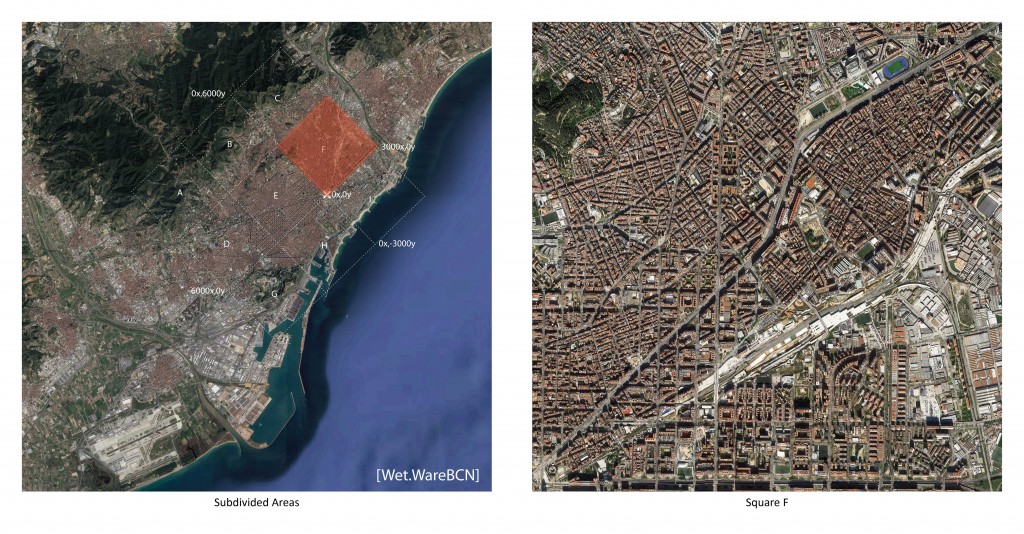
The Approach
At the turn of the century, Barcelona started to grow and transform the surrounding villages and landscapes, creating its current distinctive grid. Barcelona systematically changed its environment imposing a new network throughout the city which would not provide many relief spaces in the dense urban network. Through our analysis of the existing networks and structures using gradient fields and path systems in Grasshopper, we were able to understand the current city. Following this, our proposal to create a new network became a new way of looking at the city. Below are a series of images depicting our process of exacting and creating information.
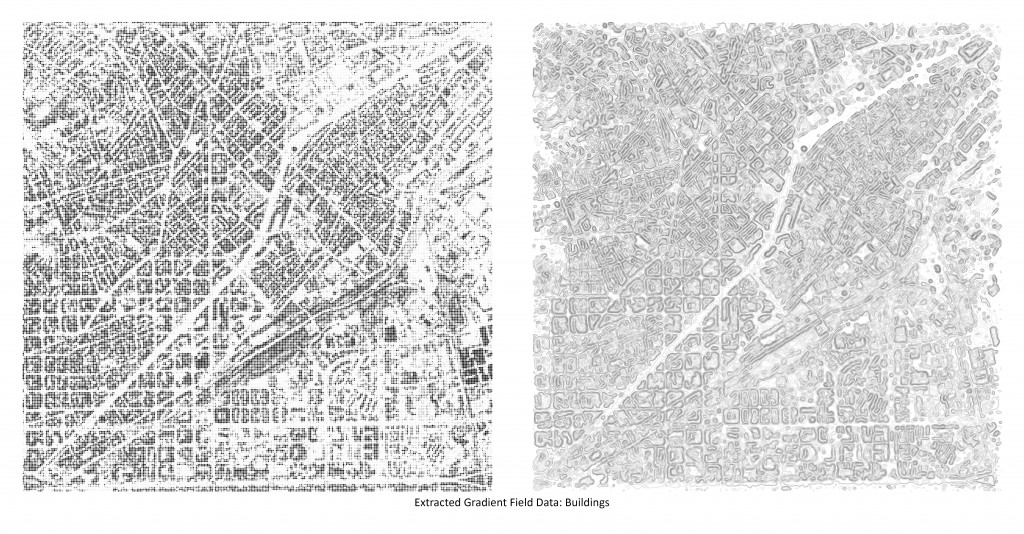
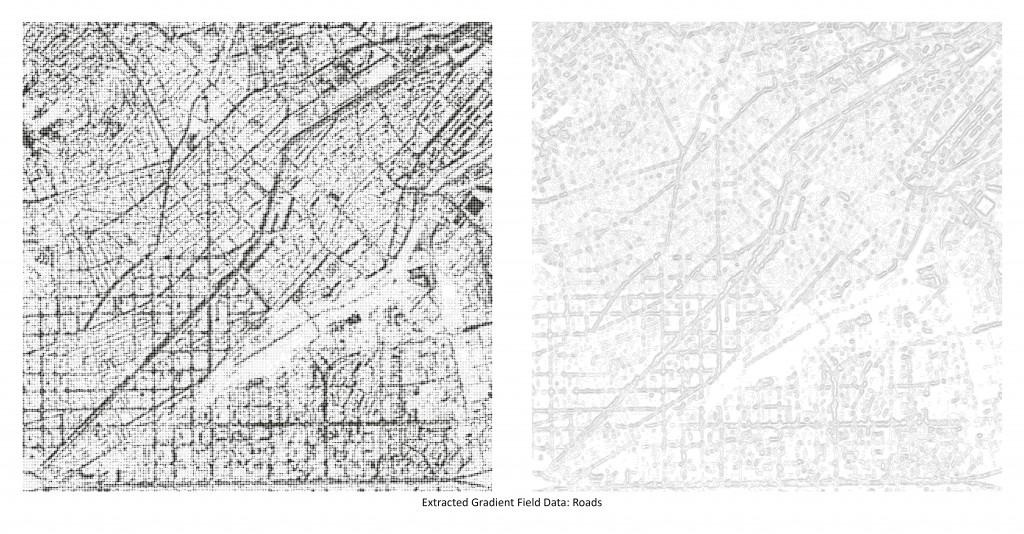
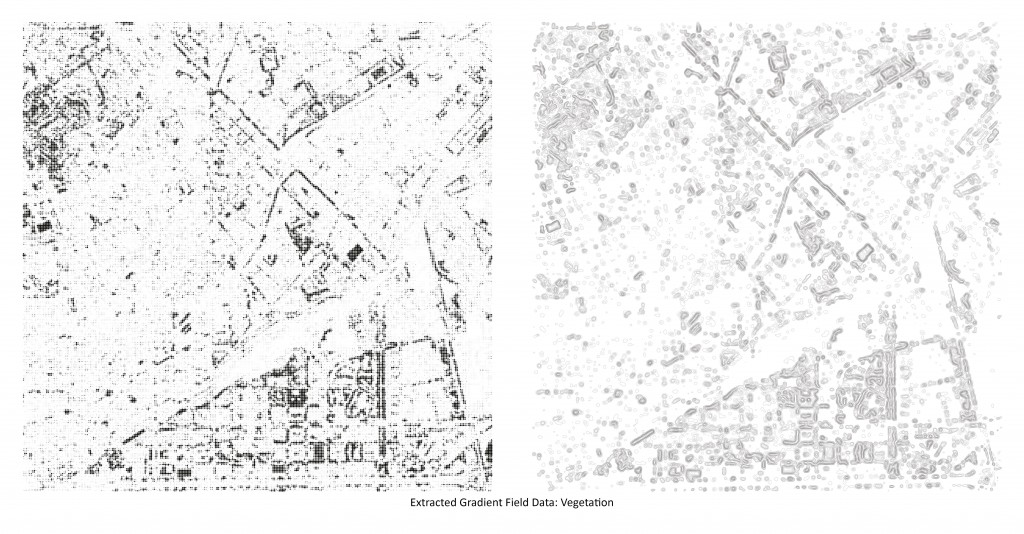
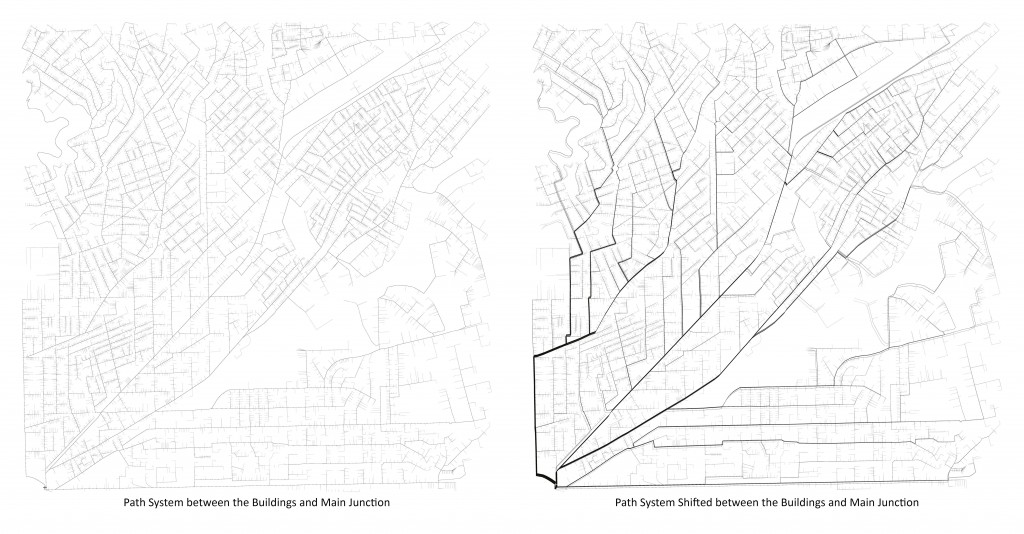
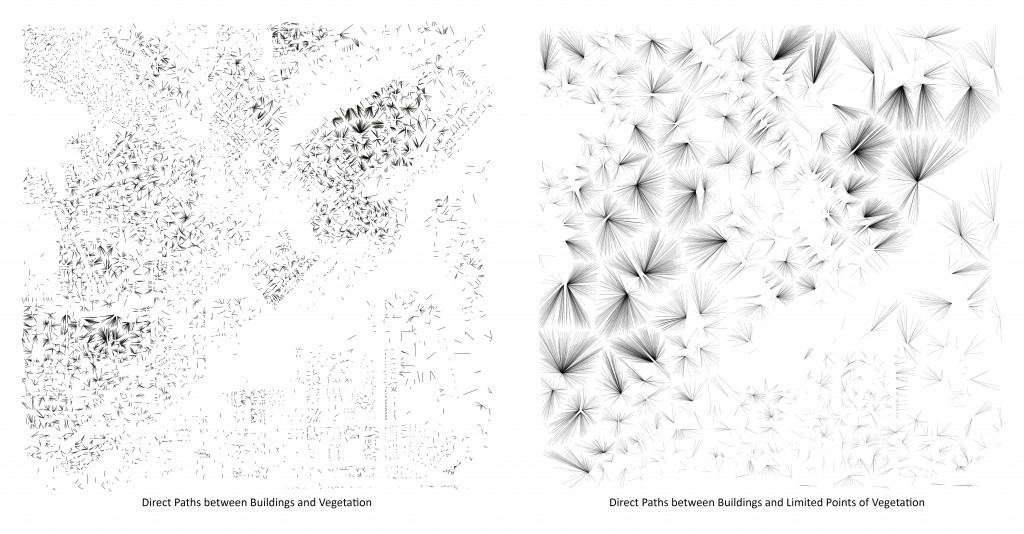
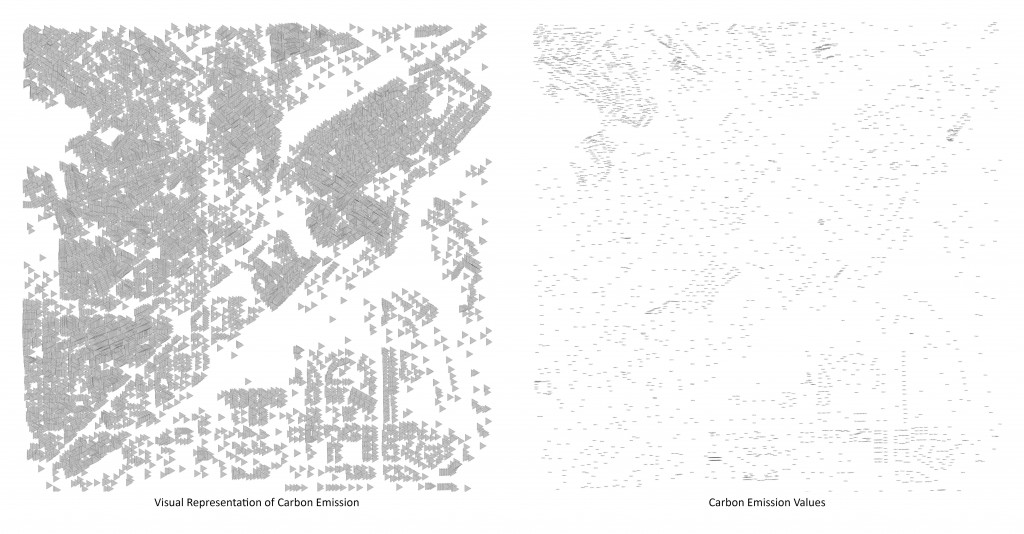
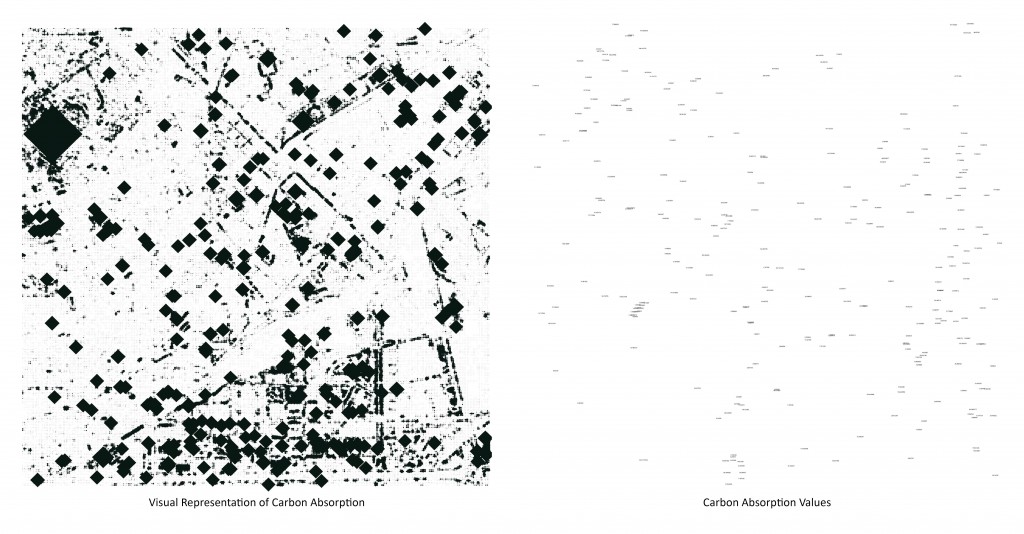
The Proposal
First, the 10 points with the greatest intensity of existing green were found using the gradient field extracted from the satellite image. Following the mesh of the topography, the minimal path system was calculated from the building centre points to these 10 new points. This new network resembles an agricultural system that begins to overgrow the city, allowing for the propagation of seeds and new circulation routes for fauna. Below is the final drawing proposal as well as the render created in Keyshot. The short video explains the build up of layers.
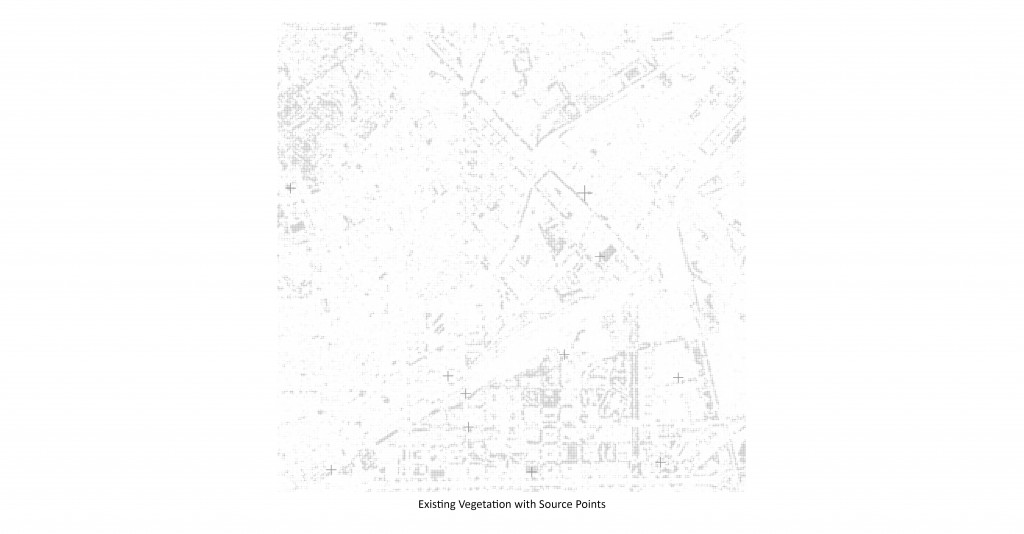

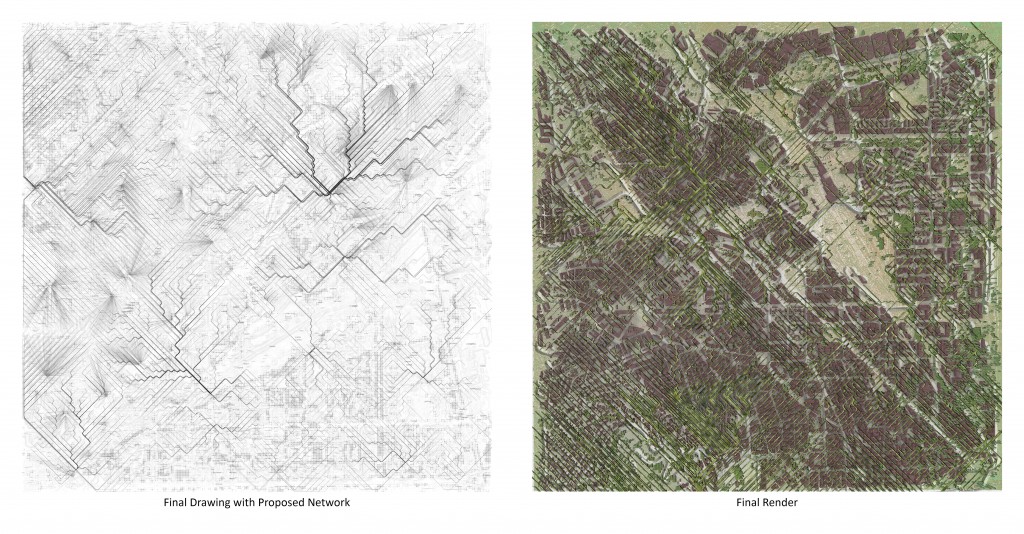
Slime Mould (Physarum Polycephalum) Experiments
Experiment 1:
Taking the 10 starting points of the proposal, we wanted to see how the Physarum Polycephalum would create its own biological network between the same points. Oats are placed at these 10 points to entice the slime mould towards them. Over the course of the week, the slime mould began to expand and contract as it started to navigate across the agar to find its food. Furthermore, when some other organism started growing in the petri dish, the slime mould went straight for it.

Experiment 2:
This experiment explored the existing vegetation and trees from one of the 10 points used in the proposal. Zooming into the map, the building blocks were moulded in acrylic and covered in agar. Oats represent the existing trees and vegetation. Within three days the mould started to expand and grow along and over the buildings.
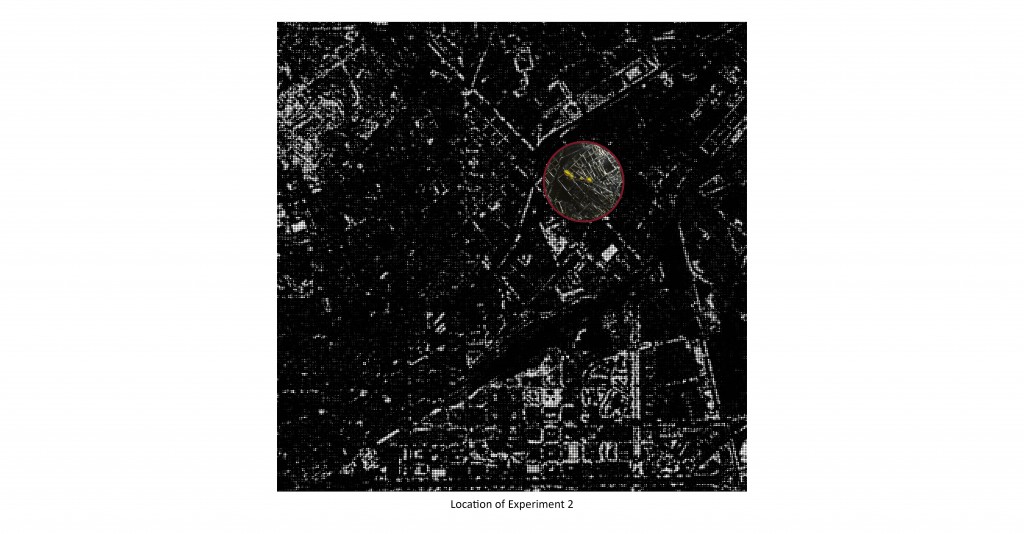 Through the experimentation we were able to compare the biological map created by the slime mould with the computer generated algorithm and see the similarities and differences between them. This also gave us an understanding into how a combination of these methods could be used to create plans for cities in a new and different way. Below is a video clip of the slime mould experiments.
Through the experimentation we were able to compare the biological map created by the slime mould with the computer generated algorithm and see the similarities and differences between them. This also gave us an understanding into how a combination of these methods could be used to create plans for cities in a new and different way. Below is a video clip of the slime mould experiments.
WET.WARE BCN is a project of IaaC, Institute for Advanced Architecture of Catalonia developed at Master in Advanced Architecture, in 2018/2019 by:
Students: Holly Carton, Fiona Demeur, Aishath Nadh Ha Naseer
Faculty: Claudia Pasquero, Marco Poletto
Computational Expert: Konstantinos Alexopoulos